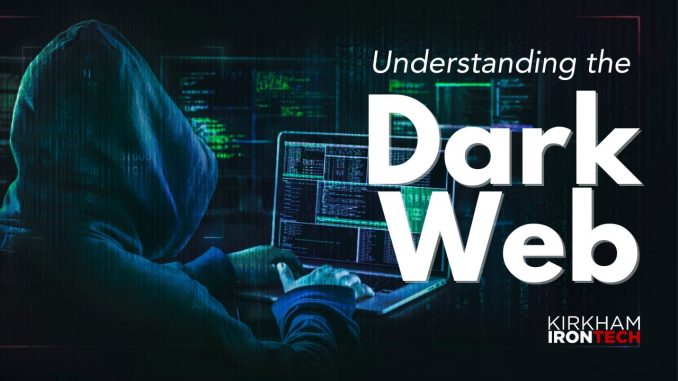
Introduction
Welcome to the hidden realm of the internet, where anonymity reigns supreme and secrets lurk in every virtual corner. Brace yourself as we embark on a deep dive into the enigmatic world known as the Dark Web. In this blog post, we will peel back the layers of secrecy and shed light on what lies beneath, uncovering its true nature and dispelling myths along the way.
The Dark Web has captured our collective imagination with its mysterious reputation. It is a clandestine network that operates outside conventional search engines, allowing users to explore uncharted territories far from prying eyes. But what exactly is it? And how does it differ from its counterpart, the Deep Web?
Join us on this journey as we navigate through cyberspace’s shadows to unveil what truly lies within. Discover tools and techniques for accessing this elusive underworld while understanding its anonymous nature. We will also delve into illegal activities that thrive within these digital alleys – from cybercrime to stolen data marketplaces – shining a spotlight on their dark side.
But fear not! We won’t leave you defenseless against these lurking threats. Learn about the efforts made by law enforcement agencies in combating crimes committed via Dark Web platforms and gain valuable insights into cybersecurity measures that can safeguard your online presence.
As we demystify misconceptions surrounding this hidden landscape, prepare to have your preconceived notions challenged. Separate fact from fiction as we explore how society and technology are impacted by this parallel universe.
So buckle up and get ready for an eye-opening adventure through The Dark Web Unveiled: A Deep Dive into the Hidden Internet!
What is the Dark Web?
The Dark Web. Just the name alone conjures up images of mystery and intrigue, a hidden underworld lurking beneath the surface of the internet. But what exactly is it?
In simple terms, the Dark Web refers to a part of the internet that is intentionally concealed and inaccessible using traditional search engines like Google. It operates on encrypted networks, such as Tor, which anonymize users and their activities.
To understand the Dark Web, we must first differentiate it from its cousin – the Deep Web. The Deep Web encompasses all web content that is not indexed by search engines. This includes private databases, password-protected websites, and even your personal email account.
However, within this vast expanse lies a darker realm known as the Dark Web. Here you’ll find websites offering illegal goods and services like drugs, weapons or hacking tools; forums for cybercriminals to exchange information; and marketplaces where stolen data can be bought or sold.
Accessing this hidden world requires specialized tools such as Tor Browser or I2P along with cautionary measures to protect one’s identity. While there are legitimate reasons for accessing these networks (such as bypassing censorship in oppressive regimes), it’s important to tread carefully due to its association with criminal activity.
But don’t let all this talk of illicit activities paint an entirely negative picture – there is more than meets the eye when it comes to understanding the Dark Web’s impact on society and technology.
So buckle up! We’re about to embark on a deep dive into this hidden internet landscape where anonymity reigns supreme and secrets abound…
Definition and Explanation
The Dark Web is a term that has gained widespread attention in recent years, often invoking images of illicit activities and hidden networks. But what exactly is the Dark Web? In simple terms, it refers to a part of the internet that is not indexed by search engines and requires special tools or software to access.
Unlike the surface web, which encompasses websites that we commonly interact with on a daily basis such as social media platforms or online shopping sites, the Dark Web operates within encrypted networks called darknets. These darknets provide users with anonymity and privacy by concealing their identities and locations.
It’s important to note that the Dark Web should not be confused with the Deep Web. While both terms refer to parts of the internet that are not easily accessible through traditional search engines like Google or Bing, they have distinct differences. The Deep Web refers to any content on the internet that is not indexed by search engines, including password-protected pages or private databases.
To navigate the Dark Web, individuals typically use specialized software such as Tor (The Onion Router) which enables anonymous communication over public networks. This allows users to access websites ending in .onion instead of traditional domain extensions like .com or .org.
Due to its anonymous nature and lack of regulation, illegal activities thrive on the Dark Web. Cybercriminals engage in various malicious activities such as drug trafficking, hacking services for hire, counterfeit document sales, and even human trafficking. The availability of stolen data also fuels identity theft crimes.
Law enforcement agencies around the world are actively working towards combating cybercrime on the Dark Web through dedicated task forces specializing in digital investigations. However, staying safe from these threats falls largely upon individual responsibility. Implementing robust cybersecurity measures such as using strong passwords, regularly updating software and antivirus programs can help protect against dark web threats.
There are numerous myths surrounding this hidden realm of cyberspace – from rumors about red rooms where violent acts are live-streamed to claims of vast treasure troves of secret information. It’s important to separate facts from fiction and understand the Dark Web for what it is – a small but significant part of the internet that requires caution and vigilance when exploring.